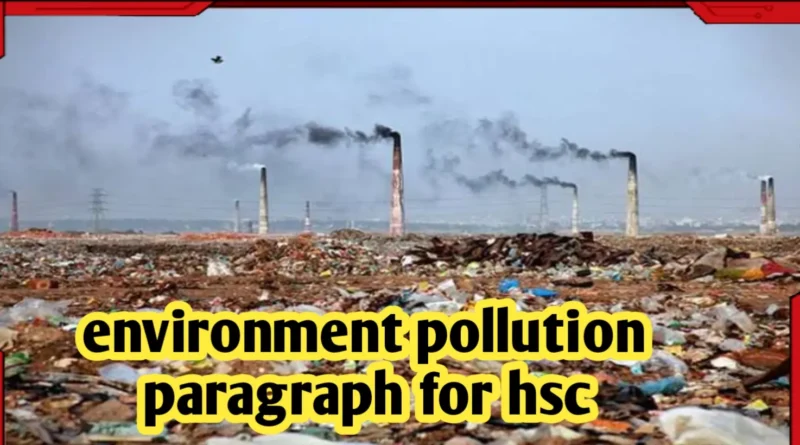environment pollution paragraph for hsc
Introduction:
In today’s world, the issue of environment pollution paragraph for hsc has become a pressing concern. From air and water pollution to deforestation and climate change, the detrimental effects of human activity on our planet are increasingly evident. However, there is hope. By understanding the root causes of pollution and implementing effective solutions, we can mitigate its impact and create a healthier environment for future generations.
Understanding Environment Pollution Paragraph for HSC:
What is Environment Pollution?
Environment pollution refers to the introduction of harmful contaminants into the environment, leading to adverse effects on ecosystems, wildlife, and human health. This includes pollutants such as carbon emissions, industrial waste, and chemical runoff.
Causes of Environment Pollution:
- Industrial Activities: Factories and manufacturing plants release pollutants into the air and water, contributing to pollution.
- Vehicle Emissions: Exhaust fumes from cars, trucks, and other vehicles release harmful gases into the atmosphere.
- Deforestation: The clearing of forests disrupts ecosystems and reduces the planet’s capacity to absorb carbon dioxide.
- Improper Waste Disposal: Dumping of trash and hazardous materials contaminates soil and water sources.
Impact of Environment Pollution:
Environment pollution has far-reaching consequences, affecting both the environment and human health.
- Air Pollution: Leads to respiratory problems, cardiovascular diseases, and exacerbates climate change.
- Water Pollution: Contaminated water sources pose risks to aquatic life and human consumption.
- Loss of Biodiversity: Pollution contributes to habitat destruction and threatens plant and animal species.
- Climate Change: Increased greenhouse gas emissions from pollution contribute to global warming and extreme weather events.
Solutions to Environment Pollution:
- Transition to Renewable Energy: Investing in solar, wind, and hydroelectric power reduces reliance on fossil fuels and lowers emissions.
- Implementing Stricter Regulations: Enforcing environmental regulations on industries and vehicles helps reduce pollution levels.
- Promoting Sustainable Practices: Encouraging recycling, reducing plastic usage, and adopting eco-friendly habits minimizes waste.
- Afforestation Efforts: Planting trees helps restore ecosystems and sequester carbon dioxide from the atmosphere.
Challenges in Combating Environment Pollution:
- Political Will: Overcoming political obstacles and garnering support for environmental policies can be challenging.
- Technological Limitations: Developing cost-effective and efficient technologies for pollution control remains a hurdle.
- Behavioral Change: Encouraging individuals and businesses to adopt sustainable practices requires education and awareness.
FAQs (Frequently Asked Questions):
Pollution can lead to respiratory diseases such as asthma, lung cancer, and cardiovascular issues due to the inhalation of toxic pollutants.
Volcanic eruptions, wildfires, and dust storms are examples of natural events that contribute to pollution.
Yes, the release of greenhouse gases from human activities such as burning fossil fuels contributes to climate change.
Absolutely, small actions such as conserving energy, reducing waste, and advocating for environmental policies can collectively make a significant impact.
Governments play a crucial role in implementing regulations, investing in clean technologies, and promoting sustainable practices to combat pollution.
Businesses can adopt green practices, invest in clean technologies, and adhere to environmental regulations to minimize their ecological footprint.
Conclusion:
Addressing environment pollution paragraph for hsc requires collective action on a global scale. By raising awareness, implementing sustainable practices, and holding industries accountable, we can pave the way towards a cleaner and healthier planet for generations to come.
